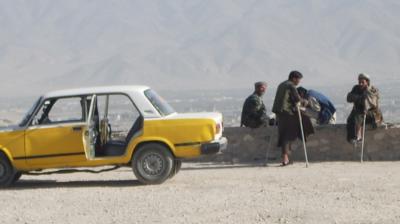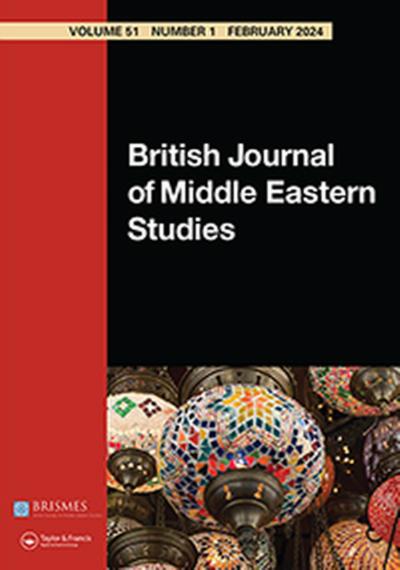Temporary protection as a durable solution for Afghan refugees in Europe?
August 19, 2021
With the Taliban takeover in Afghanistan, a ‘durable solution’ to decades of forced displacement has never appeared more remote. In our presentation for the IASFM18 conference in July 2021, we described how the European response to Afghan refugees during the past decade has reinforced the harms of protracted displacement [1] in countries of asylum as well as upon ‘return’ to Afghanistan. This post summarizes some of our main arguments.
In light of today’s situation, however, reflections about the relationship between asylum policies and continued displacement seem even more urgent. Countries must consider not only who is in most need of protection and where it can be provided, but also for how long. It will be tempting for some countries in Europe to offer only short-term grants of protection, particularly if they face a large increase in the numbers of Afghan refugee claimants. However, the predictably long-term needs of Afghan refugees are not met by precarious conditions of residence in countries providing protection. This means that Afghan asylum seekers – as well as those directly resettled from Afghanistan or elsewhere in the region – should be granted a secure refugee status and an opportunity to rebuild their lives.
Context for the current mobility crisis
The protracted nature of Afghan displacement can be traced back to 1978 with the Marxist coup d'etat in Kabul, followed by the Soviet invasion of Afghanistan. Today Afghan nationals comprise the second largest refugee population after Syrians [2]. Afghanistan also has large crisis of internal displacement estimated to measure 4 million in 2020.
The largest number of Afghans outside of Afghanistan reside in Pakistan and Iran. Often when we speak of Afghan protracted displacement, these are the people we think about. However, refugee policies in Europe also create and sustain the insecurity associated with forced displacement.
Since 2019, for instance, Afghan refugees have been the second largest group of asylum seekers in Europe where access to protection is unreliable; waiting times are long; and recognition rates vary across countries and, also, within countries across time. In Norway, for example, the percentage of recognized Afghan refugees has varied from 28% in 2016 to 77% in 2019. European containment policies also produce precarity: half of refugees waiting for protection on the Greek islands are reportedly Afghan.
Underpinning the treatment of Afghan refugee claimants in Europe, is the assumption (until recently) that Afghans can be removed to Afghanistan. This is exemplified by efforts to establish reception centres for unaccompanied minors in Kabul as well as policies such as Joint Way Forward (2016) and Joint Declaration of Migration Cooperation (2021). As Taliban advances this summer triggered a suspension of deportation in some countries, others maintained that “stopping returns sends the wrong signal and is likely to motivate even more Afghan citizens to leave their home.” However, research shows that forced returns are often logistically problematic, and when they do take place, unsustainable.
Legal barriers in Europe to receiving protection
Refusal of asylum on the basis of an 'internal protection alternative'
So, how specifically do asylum policies in Europe prolong displacement, in particular for Afghan refugees? One mechanism is through application of the ‘internal protection alternative’(IPA) which typically creates new situations of displacement within Afghanistan. According to the logic underpinning IPA practice, international protection is not needed if a refugee claimant can safely and reasonably relocate to another part of her country of origin. Application of the IPA is often controversial, however, and particularly when it comes to Afghanistan where Kabul is commonly named as a proposed IPA.
First, the baseline requirement of ‘effective protection’ has been absent in Kabul even before the Taliban takeover. It relates not only to the government’s ability to suppress threats to the entire population but also the particular risks that people with certain profiles or migration experiences face. Second, a person’s actual access to protection in the return area is often dependent on support from family or other forms of connection. We see from IPA practice that states often either fail to consider the realities of whether such support is available or, as a matter of law, exclude them from the IPA assessment. In Norway, for example, the removal of the reasonableness requirement by the Parliament in 2016 means that people’s lack of a network no longer precludes IPA practice.
Irrelevance of the refugee experience in Iran and Pakistan
When considering claims to asylum, decision-makers scrutinize risks in the country of nationality regardless of where someone was born or how many previous countries of residence the claimant has or how long he or she has lived in them.
In their asylum claims, Afghans must demonstrate that they face persecution or other serious harms in Afghanistan - even if they have never lived in the country. This favors a superficial analysis of security risks to ordinary civilians living in the areas where the claimant's family has ties. Living with precarious status in Iran or Pakistan for prolonged periods may be dismissed as "secondary movement" rather than a source of risk in itself, or upon 'return' to Afghanistan.
Legal barriers to retaining protection
A second way in which asylum policies extend the protracted nature of displacement is by making the terms of protection more insecure.
This is done first by granting explicitly time-limited permits. While temporary protection status has traditionally been granted in situations of mass influx, when the needs are predictably short term or as part of a coordinated international response, today’s reliance on temporary permits is woven into the general asylum legislation.
Temporary protection usually takes one of three forms: first, we see a status sometimes granted unaccompanied minors that expires at the age of 18. In Europe, Afghan nationals make up about half of these UAM cases, and many are subsequently deported. Second, a subsidiary protection status may be granted to refugees fleeing countries in conflict for a short period of time, from 1-3 years, and then reviewed. People with this status typically have fewer rights than other refugees, including to family reunification.
And finally, proposed UK legislation would grant a temporary status to refugees who arrive through unauthorized channels typically as asylum seekers in the UK (the Bill is here). People with this status would have no path to permanent residence and be ineligible for most public support. Again, none of these policies explicitly target Afghans but Afghans are, or are likely to be, strongly affected. Along with other refugees many Afghans will be stymied in efforts to get to the UK, as containment measures to block departures from France are intensified. This two-tiered system discriminates against Afghan asylum seekers, who receive a much lower quality of protection compared to their compatriots with similar needs, who were lucky enough to enter through a resettlement scheme or another authorized channel.
Cessation, or withdrawal, of refugee status
Another way the terms of protection are made more insecure is through the more prominent threat of withdrawing refugee status when the protection need no longer exists (the “cessation” provisions of the Refugee Convention and the Qualification Directive). Increasingly, states are reviewing protection status either at certain points in the immigration process, for example when there’s an application for permanent residence or family reunification, or at the initiation of authorities when conditions in a certain country of origin have changed. For example, Somalis in Norway and Syrians in Denmark have been particularly targeted for protection reviews and some deportations have taken place.
The threat of premature return is enhanced by the fact that the IPA has creeped from the asylum assessment into cessation decisions based on changes in the country of origin. This means that a person who has had refugee status for a number of years may lose it based on a current IPA even if their previous homes remain insecure.
Afghan refugees so far have not been targeted on as a national group. However, in Norway and Sweden they’ve emerged in a category of cessation cases based on changes in personal circumstances. Unaccompanied minors who’ve reached the age of majority and single women who are later joined by their partners have faced cessation of refugee status because the conditions giving rise to that status no longer exist. Legal reasoning results in ‘returns’ to internal displacement, where the limited protection available is mediated through the presumably secure presence of male relatives.
Limits on the quality of protection
A final way in which asylum policies prolong the harms of protracted displacement is through the dilution of residence rights associated with refugee status. These include reduced welfare rights, and non-protection related barriers to permanent residence and family reunification. These can include requirements related to income and employment, clean criminal records, and proof of identity. Again, these policies target refugees and other immigrants broadly, but have particular effects on Afghan refugees. For example, in Norway, many Afghans – including former UAMs - receive one-year permits based on their unverified identity. Such short-term permits do not provide a path to permanent residence, and they create significant barriers to inclusion by making it harder to get a bank account, housing and work.
Conclusion
Temporary protection is no solution for refugees from countries where protracted displacement (within or outside national borders) is the norm rather than an exception. In Europe, we have seen how reliance on the IPA, time-limited residence permits, and the dilution of refugee rights prolongs the harms of forced displacement – within those countries of residence as well as in Afghanistan. Moreover, such policies rely on certain legal fictions.
One fiction is that return is return at all, given how many Afghan nationals have built their lives outside of Afghanistan or cannot return to their previous homes there. The second is that Kabul offers a safe haven to returning Afghans, despite well-documented threats that are exacerbated by internal displacement. In particular, the protection provided by non-state actors, including family members, is often deemed decisive for a refugee claim without a real analysis of how conflict and displacement affect the quality or durability of the protection provided. A third fiction is that temporary protection is a durable solution for Afghans in Europe. Instead, the insecurity of this status poses mental and physical health risks, as well as barriers to education, employment and housing.
Qualitative research into lived experience of Afghans with irregular or temporary status in Europe shows us how these policies extend Afghan protracted displacement by increasing the precarity for those who hold status, irregularising Afghans who cannot access protection, and putting Afghans who have been removed in harms’ way which they may seek to resolve through re-migration and continued displacement within Europe.
[1] The TRAFIG research consortium describes protracted displacement as a “figuration in which the capabilities and options of people for rebuilding their lives after displacement are severely limited for prolonged periods of time.”
[2] Note: this statistic excludes the number of "Venezuelans displaced abroad" who, according to UNHCR, numbered approximately 3,6 million persons in 2019, the last year for which statistics are published.






